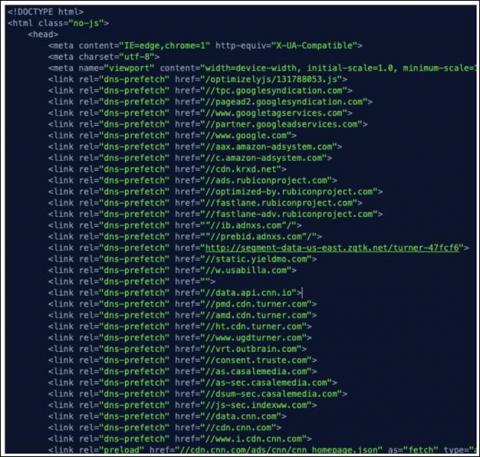Operations | Monitoring | ITSM | DevOps | Cloud
Logging
The latest News and Information on Log Management, Log Analytics and related technologies.
What Is a DNS Prefetch?
This article helps you understand DNS prefetching, one type of resource hint, including what they are, why and how to use them, and best practices for auditing and scaling them.
What Are Preconnect Resource Hints?
In this article, let’s take a look at preconnect resource hints — what they are, why and how to use them, and best practices for auditing and scaling them.
CDN Log Analysis
Since the beginning of the Internet, the speed of delivering content has been an issue. While processor enhancements, network acceleration, and web frameworks have brought drastic improvements to performance, the goalposts have continued to shift further away; devices operate on wireless connections with limited bandwidth, and the Internet is accessed from every corner of the globe.
Debug Logs and Analyze Trends with Log Data Restoration
Everyone in your organization needs logs to perform critical functions of their job. Developers need them to debug their applications, security engineers need them to respond to incidents, and support engineers need them to help customers troubleshoot issues. These various use cases create general requirements for enriched log data and often include the need to access insights from outside typical retention windows.
Mezmo Joins Industry Campaign to Close the Cybersecurity Talent Gap
The cost of cybercrime is predicted to hit $10.5 trillion by 2025, according to the latest version of the Cisco/Cybersecurity Ventures "2022 Cybersecurity Almanac." The way that people work, the tools that they use, and the mindset they must adopt to protect the enterprise has to evolve to keep up with the threat landscape.
Expanding Vision: OpenSearch Dashboards Advance Open Source Observability
From the moment Elastic announced plans to abandon a pure open source license for its Elasticsearch engine and Kibana dashboards in early 2021, there’s been a massive effort underway to create clear alternatives for the global community of active users. Logz.io has been an outspoken advocate and contributor to this work – fully embracing it as part of our product roadmap to best serve the needs of our customers, and preserve our long-term commitment to open source observability.
Building Efficient Pipelines in Cribl Stream
An old colleague of mine once said to me, “It doesn’t matter how inefficiently something DOESN’T work.” This was a joke used to make a point, so it stuck with me. It also made me consider that it does matter how efficiently something DOES work. Sometimes, when we have tools like Cribl Stream making things like routing, reducing, and transforming data so easy, we can forget that there might be a more efficient way to do it.
Monitoring APIs with Authentication
With the rise of microservices and distributed systems, more and more data migrates through APIs. So, let’s look at the best ways to monitoring APIs using authentication.
Integrating API Monitoring Into Your Performance Management Strategy
APIs have existed nearly as long as websites themselves. But because APIs are primarily consumed by programs instead of people, they tend to be less visible than applications or sites directly accessed by users. The result: APIs often receive far less attention from a site reliability engineering (SRE) and monitoring perspective than other parts of application environments.











